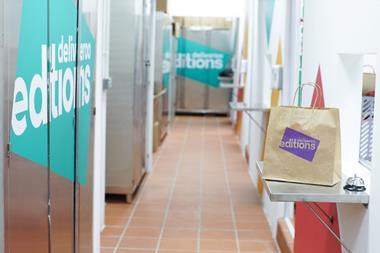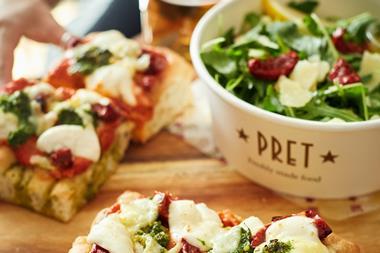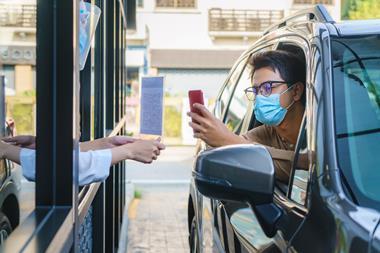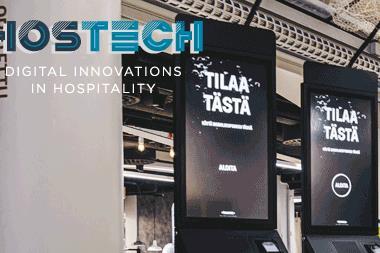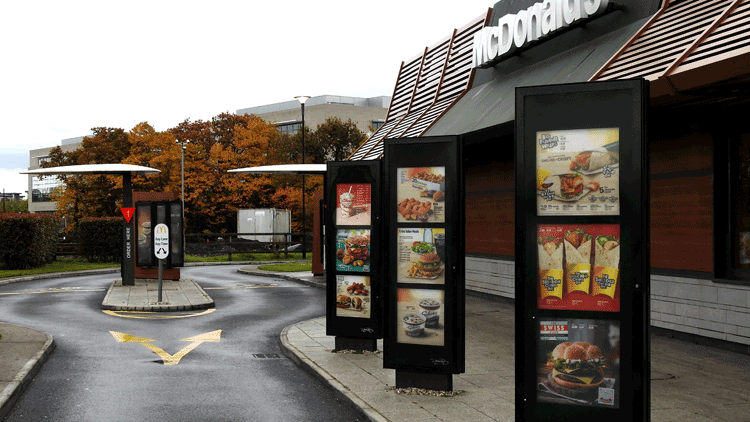
If there’s one thing those in the restaurant industry have learnt more than anything in the past 12 months, it’s the true value of back of house tech.
With on-premise dining off the menu for much of the year, restaurants of all types have had to switch to takeaway, delivery and even mailed out meal kits to get some form of income stream.
A solid kitchen management system and seamless integrations with third party tech companies are a necessity for such a shift in operations.
What’s more, with restaurants yo-yoing between being open fully, to open at a much reduced capacity, to open for takeaway only, and then being closed completely, managing staffing levels is hugely complicated. In this unprecedented situation, workforce management technology has become invaluable.
Another aspect of technology which has become even more crucial in these uncertain times is that of analytics software.
“What separates the good from the great businesses is the owner’s ability to interpret data in their decision-making,” says Lightspeed senior vice president Adrian Valeriano.
Analytics software provides key insights into business performance which can be tracked on EPoS systems. Metrics and reporting features provide insights that are integral to growing any business, smarter, by highlighting the areas which require more resources and equally, those which need less.”
“Some operators may look at 2020 as the year that ‘forced their hand’ into adopting new technology - and that might be technically true,” says Ashley Sheppard, vice president of sales at QSR Automations.
“The reality is that the industry has been heading in this direction for years; the pandemic has accelerated it.”

Kitchen Management Systems
Kitchen management systems (KMS) have really come into their own during the pandemic, helping to improve communication and eliminate errors for staff who are often simultaneously preparing meals for both on- and off-premise diners.
Alison Vasey, group product director at Zonal, says that with more than half (58%) of hospitality staff feeling that Covid-related safety measures have impacted the level of service they can provide, one of the Zonal is supporting businesses to provide a frictionless and safe customer journey through technology.
“For example, research pre-pandemic revealed that 47% of customers say food not arriving quickly enough is their main frustration when dining out, and we can expect this to remain the case as hospitality reopens,” says Vasey.
With Zonal’s Kitchen iQ platform, each order is displayed on a screen in the kitchen and the order status is available to both kitchen and front-of-house staff at the same time, thus bottlenecks can be easily identified and eliminated and customers can be updated when necessary.
QSR Automations’ ConnectSmart Kitchen also helps operators ‘blend’ their various traffic streams, providing accurate quote and pickup times to customers. Tevalis’ KMS, meanwhile, offers live tracking of all dish statuses from multiple stations, with immediate full access to all recipe cards, including preparation methods, plated images, allergens and nutritional information.
“For the newly popular dark kitchen operations, the KMS is their first point of call as managing large influxes of online orders from a variety of delivery platforms is paramount,” says Tevalis commercial director James Humble.
E-commerce
With restaurants repeatedly being shut down due to the pandemic, operators have had to find innovative ways to keep on serving their customers - and keep their businesses afloat.
One such innovative idea which has really taken off is that of mailed out meal kits – aka ‘makeaways’– while many restaurants are also offering gift vouchers for redemption once things return to (near) normal.
Online ordering for takeaway and delivery has also been embraced by many operators who didn’t previously cater for off-premise diners, and all these revenue streams are likely to be here to stay.
“It cannot be denied that the pandemic has accelerated the acceptance of technology in hospitality venues, with mobile order and pay technology at the forefront of this movement,” says Zonal’s AlisonVasey.
According to Zonal and CGA’s GO Technology survey October 2020, around a fifth (18%) of consumers said they typically used technology to order and pay for food and drink pre-pandemic. However, that number has more than doubled to 43% - emphasising the pivotal role that technology is playing.
“Although operators may have implemented some form of contactless ordering in-venue as a necessity in 2020, looking to a post-pandemic world, these forms of technology can provide operators with huge opportunities to maximise efficiency and increase revenues,” continues Vasey.
When the country first went into lockdown Lightspeed client Boundary London wanted to offer delivery to its customers; this was made easy through Lightspeed’s integration with Deliverect, which enables operators to add an ordering system that communicates seamlessly with their restaurant point-of-sale setup.
Aaron Resch, chief operating officer of Boundary London says this allowed the east London restaurant to put every single item it was selling in its cafe and grocery store onto Deliveroo. “We were immediately selling every product we had available as a delivery. It helped save our business.”
For the growing number of restaurants turning to selling meal kits for people to make a restaurant-quality meal at home, ensuring what you’re sending out meets all the food safety and allergen requirements is a major consideration. That’s where cloud-based safety management software becomes an invaluable tool.
“Entering 2021, the restaurant landscape has completely changed from 12 months ago with food delivery, take-away and meal kits - or makeaways - showing exponential growth,” says Food Alert technical director Julia Wilson.
“Technology has been the enabler, with online ordering and payment apps becoming the norm. But what has also been key is the transfer to digital compliance, through the adoption of complete cloud-based safety management software, such as Alert65.
“When staff numbers are limited and strict travel restrictions are in place, being able to easily update and share the latest legislation, send updates and reminders, create checklists, access certificates and even employee training schedules remotely, from any location, such as a home office, is a huge benefit.”
The recent experience of Food Alert client ULG (Urban Leisure Group) backs this up. “Prior to the pandemic, we were already users of Alert65 but the true value of the software has really shone during these challenging times,” says ULG operations manager Hannah Vernon.
Workforce management
Since the outbreak of the pandemic, consumer confidence and demand has fluctuated, staff absences through illness or self-isolation have become the norm, and restaurants have been shut at almost a moment’s notice.
Altogether, the situation has led to massive challenges for operators when it comes to scheduling labour, and a reliable and effective workforce management system has become essential.
Dave Ellmer, head of scheduling and productivity consulting at Fourth, says that establishing accurate head count needs has become increasingly complex due to the volatility of trading.
“Keeping teams engaged, enthusiastic, safe and up-to-date with training and guidelines can’t be underestimated. Workforce Management (WFM) software can provide clear guidance on where and when to deploy team members, and most solutions have the configuration to allow adjustment based on real data feeds,” he says.
“Sales opportunities still exist, and they can be more easily identified when using a tech solution. Operating with a reduced team means it’s more important than ever to spend labour where it is most needed, to support customer demand, but also protect the team.”
Epos company Access says its cloud-based WFM software helps businesses to streamline their human resource and people management processes and can manage everything from employee recruitment and onboarding to holidays and tronc payments.
It also provides workforce scheduling and rota management and labour optimisation tools to help ensure the right staff are on at the right time. While there has been an inevitable dip in demand for such systems with restaurants being closed, once they have reopened they will likely become crucial tools for businesses battling with the new normal.
Metrics and Insights
With the ongoing challenges to trading facing the hospitality industry, monitoring business performance and fine-tuning where necessary has never been more important.
“It has been an incredibly difficult time for the on-trade and the sands continue to shift, so it seems more important than ever that operators harness the technology available to ensure they understand exactly what makes their customers tick and to drive excitement in their brand,” says Zonal’s Alison Vasey.
Zonal’s Dimensions+ tool for example, collates and analyses data history to provide meaningful insights and reports. Operators can access data across their different ordering channels, from order and pay, to delivery, to click and collect, to be able to better understand consumer trends and behaviours.
QSR Automations’ ConnectSmart platform offers robust analytics so that operators can find snags or bottlenecks in their operation, and provides real-time data allowing operators to make smarter decisions about their workflows and make adjustments in real-time. “Working with the current restraints, restaurant operators need to fine-tune their workflows to the most granular level,” says QSR’s Ashley Sheppard.
Da Terra Restaurant at the Town Hall Hotel in London has been reaping the benefits of Lightspeed’s metrics and reporting features. By using the Lightspeed inventory management feature, wait staff are even able to track wine usage for their pairing menu to the millimetre.
“Lightspeed’s daily reports help us see where we’re doing well and where we need a push. Those insights are of great value to our business, helping us save money and grow our profit margins,” says Da Terra general manager Charlie Lee.
Lightspeed’s system also offers specific reporting features to prioritise loyalty, resulting in the retention of existing customers and creating repeat business opportunities.
“If you think back a year or two ago restaurants all had that data but finding it in the different systems was the problem,” says Lightspeed’s Adrian Valeriano.
“They would have had to hire a bunch of consultants to come in to help them string all those systems together so they can get out what the spend is on a particular item. One of the things Lightspeed does very well is that it comes in and says ‘look we can do that for you and if you want to connect it to scheduling or inventory ordering you can.
“It’s about understanding what your inventory looks like and making it simple. If you’re doing that manually that can be incredibly arduous. It’s also about understanding what items are going out, what’s working right now and who is ordering it. Connecting those dots it super important.”
To download a guide to back of house tech, click here
Register your details on our dedicated Hostech website to receive a weekly roundup of content, including our free tech guides.
Sign-up for our two free webinars, must-attend events for those tasked with driving efficiencies and encouraging loyalty in a tough trading climate.
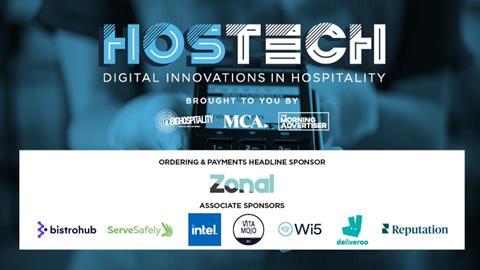
Precis
HOSTECH
Back for good: how back of house technology can transform your business
If there’s one thing those in the restaurant industry have learnt more than anything in the past 12 months, it’s the true value of back of house tech. With on-premise dining off the menu for much of the year, restaurants of all types have had to switch to takeaway, delivery and even mailed out meal kits to get some form of income stream. A solid kitchen management system and seamless integrations with third party tech companies are a necessity for such a shift in operations. What’s more, with restaurants yo-yoing between being open fully, to open at a much reduced capacity, to open for takeaway only, and then being closed completely, managing staffing levels is hugely complicated. In this unprecedented situation, workforce management technology has become invaluable.






























